125 years of excellence
Civil Engineering embarked on its road to greatness in September 1887 with 39 students registered. By 1906, the discipline had its own ruddy brick building. Today more than 550 undergraduate students and 420 graduate students specialize in architecture, environment, construction, geotech, geomatics, hydraulics and hydrology, materials, structures and transportation. State-of-the-art facilities include more than 20 research and undergraduate teaching laboratories, two large computer laboratories and classrooms.
In 1887, Civil Engineering's road was paved with lofty intentions that shine as reality in 2012. The school ranks among the nation's top programs, with an undergraduate ranking of 7th and a graduate ranking of 6th as reported by U.S. News & World Report in 2013.
As we celebrate this important anniversary, take a look back at significant events that have shaped the school as compiled by writer Angie Klink and Cindy Lawley, director of external relations.
The Beginnings
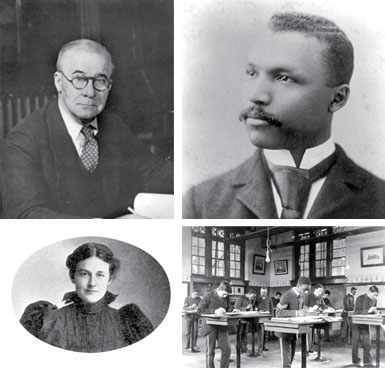
William Kendrick Hatt, far left, was said to be a complex person "subtle, brilliant, shrewd, mischievous" and a puzzle to his contemporaries. Robert Lewis, right, wrote a thesis titled Highway Road Construction that included a review of European road building practices.
President James H. Smart appointed a committee early in 1887 to "have jurisdiction over" the establishment of a course in civil engineering.
In 1896 Professor William Kendrick Hatt was named director of the Materials Testing Laboratory. Hatt was director for 31 years and served as head of the school for 30 years. He began his research on concrete in the spring of 1899, and because of his work, Purdue became widely known for its contribution to the art and science of construction in concrete.
David Robert Lewis was the first African-American to graduate with an engineering degree at Purdue. He received his B.S. in civil engineering in 1894. Lewis became an educator and businessman.
Martha Dicks Stevens graduated in 1897 with a bachelor's degree in civil engineering, securing her place in history as Purdue's first woman engineering graduate and pioneering the way for females to enter the engineering field.
Heavilon Hall

For mere days in 1894, the majestic tower of the original Heavilon Hall decorated the campus and symbolized the attainment of unequalled engineering facilities before a gas explosion brought the building down.
A gift of $35,000 from Amos Heavilon with an appropriation of $50,000 from the state made it possible to erect the long-desired mechanical building where students would attend classes along with other engineering students.
On Jan. 19, 1894, the governor dedicated Heavilon Hall as the pride of Indiana. Four days later, there was an explosion in the boiler room, and within two hours most of the new, long anticipated Heavilon Hall burned to the ground.
President Smart watched with tears in his eyes. He was nearly ill from exhaustion after spearheading the construction and had planned to take a year off once it opened. The next day, before the ruins had cooled, as smoke wafted from the rubble and the stench of smoldering wood filled the campus air, Smart spoke words that would become Purdue legend:
I have shed all my tears for our loss last night. We are looking to the future, not to the past. I am thankful no one was injured. But, I tell you, young men, that tower shall go up one brick higher.
Heavilon Hall was rebuilt taller than the original, but rather than one brick higher, the building with its iconic tower was nine bricks taller than its short-lived predecessor when it opened in the fall of 1894.
Civil Engineering Buildings

Enrollment in the school grew from its initial 29 students to more than 400 by 1907. Heavilon Hall was bursting at the seams with both mechanical and civil engineering students. Civil Engineering moved into its own, newly constructed three-story building in 1906. A second and larger addition to the building, facing Grant Street, was completed in 1927.
A new building was constructed in 1962, and all but two areas of specialization moved into the modern red brick quarters north of the Engineering Mall. Materials and geotechnical engineering remained in the Grant Street structure, which later was named Grissom Hall, after astronaut alumnus Virgil I. "Gus" Grissom.
Summer Surveying Camp

George E. Lommel spent a large part of his life at Purdue, receiving his B.S.C.E. degree in 1910. After graduation he worked as a landscape engineer and laid out a good part of East Hollywood — "when the land was cheap and I could have been independently wealthy if I had had any foresight."
Lommel returned to Purdue in 1912 as professor in topographical engineering. He designed Ross Summer Surveying Camp and was director from 1929 until his retirement in 1958.
Engineering Marvels: Hoover Dam and Golden Gate Bridge

Elwood Mead engineered the Hoover Dam, which spans the Colorado River between Arizona and Nevada. Constructed in the 1930s, the concrete arch-gravity structure prevents flooding and provides much-needed irrigation and hydroelectric power to arid regions.
Charles Ellis designed the Golden Gate Bridge — deemed as one of the "Seven Wonders of the Modern World" by the American Society of Civil Engineers. Yet Ellis was only credited in recent history despite designing, in his words, "every nut and bolt on the darn thing." Ellis was a professor of structural engineering at Purdue from 1934 to 1946.
Sanitary Engineering Evolves into Environmental Engineering

In 1896, President Smart initiated sanitary engineering at Purdue, which dealt primarily with water supply and waste removal. Typhoid fever was prevalent, and students were ordered not to throw themselves or their fellow classmates into the nearby Wabash River for fear of contamination from the sewage-filled water.
Sanitary engineering may be defined as the art and science of applying the forces of nature in the planning and construction of work pertaining to public or individual health. It is the branch of civil engineering concerned with the health of a community and it's water supply and sewage.
Environmental Engineering
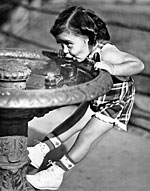
With only one world to live in, environmental engineers help to ensure we handle it with care. The skills of environmental engineers are becoming increasingly important as we attempt to protect the fragile resources of our planet. Purdue's top environmental facilities and faculty place the university at the forefront of research and education.
Transportation
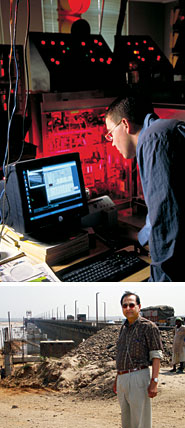
When automobiles were first around in the 1920s, Civil Engineering began attracting a large number of students in the academic specialty of transportation. Today, a vital amount of research is done in transportation through various programs indispensable to Indiana's people: the Joint Transportation Research Program (JTRP), the Center for Road Safety (CRS), the Nextrans University Transporation Center, and the Local Technical Assistance Program (LTAP).
Kumares C. Sinha, the Edgar B. and Hedwig M. Olson Distinguished Professor of Civil Engineering, is an internationally recognized expert on various transportation and public works issues, including traffic congestion, road maintenance and traffic planning.
The Harold L. Michael Traffic Operations Laboratory serves as a teaching and research lab for technology related to Intelligent Transportation Systems. The application of information technology more efficiently manages transportation infrastructure.
Pankow Laboratory
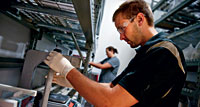
Charles Pankow earned a bachelor's degree in civil engineering in 1947 and an honorary doctorate in 1983. In 2009, the family gave funds to create and equip a world-class laboratory in his name. The lab was designed to look at materials at the nano, micro, and macro scales, with special emphasis on chemistry and durability of construction materials.
Architectural Engineering
Architectural engineering deals with integrated design, construction and operation of buildings. U.S. buildings account for more than one third of the total energy use and associated greenhouse emissions. In the program, students study the integration of different building systems and learn how to design for sustainability and energy efficiency.
NEEScomm Center
In 2009, the National Science Foundation awarded $105 million to a Purdue-led team to spearhead a center that serves as headquarters for the operations of the George E. Brown, Jr. Network for Earthquake Engineering Simulation, or NEES. Earthquake engineers use information to develop better and more cost-effective ways of reducing earthquake damage through improved materials, construction techniques and monitoring tools.
The Robert L. and Terry L. Bowen Laboratory for Large-Scale Civil Engineering
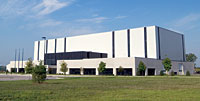
This premiere facility opened in 2002 after the Bowens provided a gift toward a new civil engineering laboratory for the study of large structures. The facility also simulates earthquakes and the effects of high winds on structures and tests beams, structural members, and subassemblies of bridges and buildings that weight thousands of pounds.
Construction Engineering
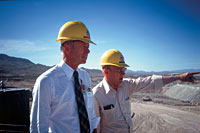
Construction has been an important Civil Engineering option from the earliest days. Stephen D. Bechtel, Jr. earned a bachelor's degree in civil engineering in 1946 and serves as chairman emeritus of Bechtel Group in San Francisco, one of the nation's premier engineering and construction firms. Bechtel has led a number of technically complex, one-of-a-kind projects, including the James Bay Project and the England-France Channel.
Materials Engineering
Materials engineers improve the roads we travel on, the coal used to fuel a factory and the sidewalks in our neighborhoods. The research facilities offer hands-on experiences to undergraduate and graduate students in two broad areas: Asphalt and Bituminous Materials, and Portland Cement and Concrete.
Geotechnical Engineering: Keeping People Safe
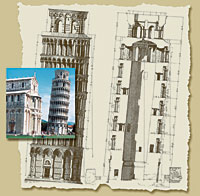
Geotechnical engineers examine the behavior of the earth's soil and rock layers in order to determine their physical and chemical properties.
Gerald Leonards and Fritz Leonhardt, two civil engineering graduates, worked on stabilizing Italy's iconic Tower of Pisa in 1990. A massive restoration and stabilization project was initialized to straighten the tower by removing 38 cubic meters of soil from underneath the raised end. Leonards consulted on the stabilization until his death in 1997. In 2001 the project was completed — straightened by 45 centimeters, returning it to the exact 1838 position.
